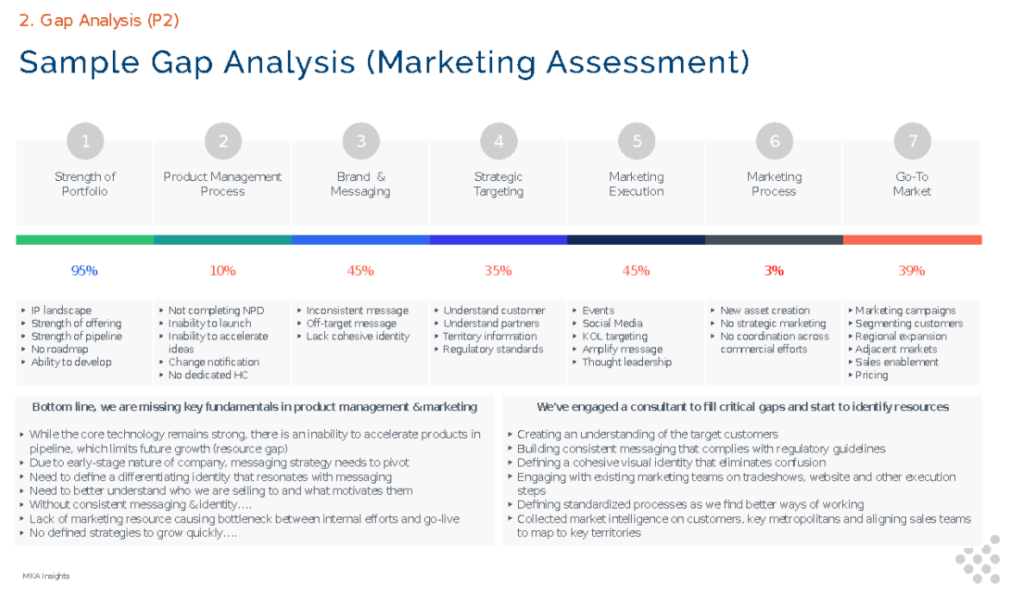Home > Insights > Sales & Marketing > Marketing Needs Assessment – Are You Prepared
Marketing Needs Assessment - Are You Prepared?
By: Kiran Chin
June, 2020

Many marketing organizations are unprepared for the work that needs to be completed because of a lack of resources, funding or management understanding on what marketing functions need to perform.
This is a sample gap analysis that we conducted for a clinical diagnostic company that had several large goals and was struggling to meet them. The process helped identify where in the marketing value chain we needed to focus time, people and investments in order to achieve the business objectives.
- Strength of Portfolio: Many organizations tend to have a strong portfolio of technology or products that often are the reason for that company’s existence. However, what often struggles is most everything that comes after.
- Product Management Process: Product managers are responsible for the health of a product and portfolio strategy. The role of a product manager is to ensure that the product is appropriately supported and invested in over time. This product manager often is required to manage the new product development process in which data is generated, products are defined and launch planning is thought through. Without a defined process and a person to support, organizations will struggle to develop products and launch them in a streamlined manner
- Brand & Messaging: A brand strategy/playbook is important to unify the message of that organization. It is necessary to be differentiated but consistent. Without such a playbook, sellers and marketers will define their own branded looks and messages – creating confusion in the marketplace. This confusion hurts younger businesses who need recognition and brand awareness in order to grow.
- Strategic Targeting: The process of identifying target customers and understanding regulatory constraints is critically important. Is there someone or a process that is setup to allow organizations to engage in strategic targeting? This information may start within the marketing organization, however it is used by sellers and is invaluable support in ensuring appropriate use of high-cost labor resources.
- Marketing Execution: Executing events is often the easier part of what marketing has to do, however, without the planning and ideation process that needs to occur, execution can have limited impacts. Additionally, it is important to note who is managing the execution as well as who is managing the customer advocates that will help the business amplify its message.
- Marketing Process: For organizations that exist in complex regulatory environments, having a robust content generation and review process is essential to success. Without it, the firm will be inundated in reviews and will struggle to publish the simplest of customer-facing content.
- Go-To Market: The targeted growth into new regions/territories, support of sellers and price support is another aspect of marketing that requires attention.
As can be seen here, marketing has many commercial responsibilities that are often managed by a limited number of individuals. There is often more work than there are bodies. To ensure the success of businesses growth strategies and product launches, it may be worth considering where your organization falls in this gap analysis and how to address those potential shortfalls.



